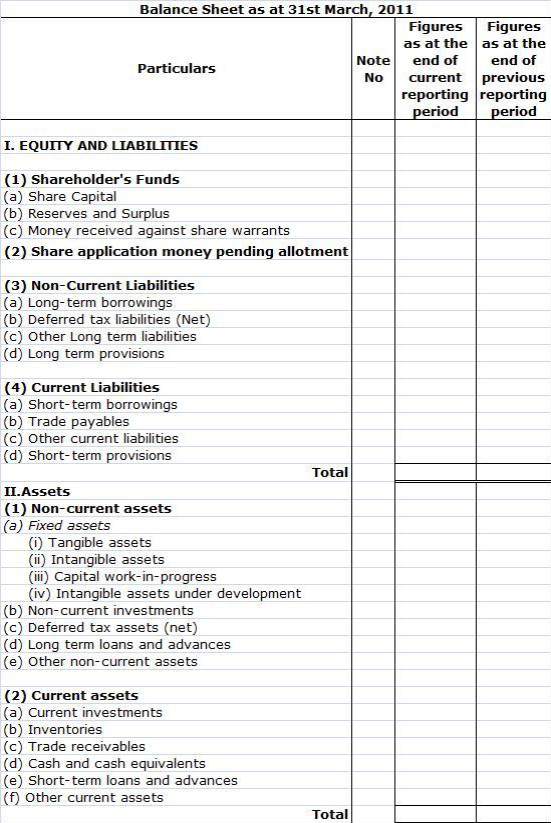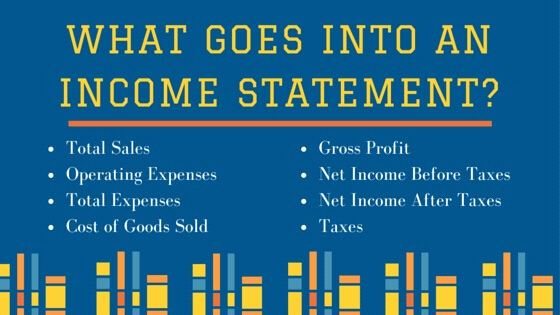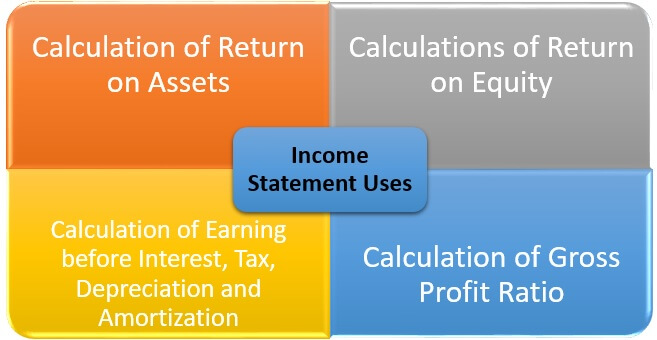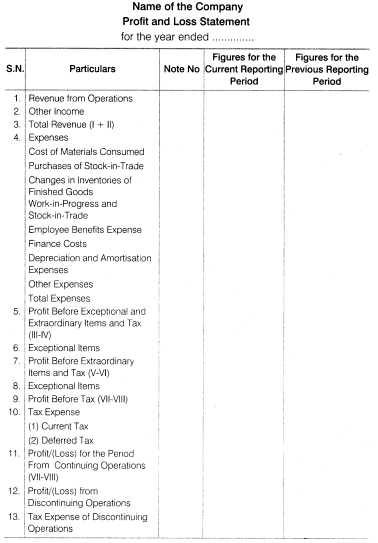Assignment Help with Balance Sheet and Income Statement
The Balance Sheet
A Balance Sheet is a statement of the financial position of a business which states the assets, liabilities, and owners' equity at a particular point in time. In other words, the balance sheet illustrates your business's net worth.
The balance sheet is the most important of the three main financial statements used to illustrate the financial health of a business (the others being the Income Statement and the Cash Flow Statement).
An up-to-date and accurate balance sheet is essential for a business owner that is looking for additional debt or equity financing or wishes to sell the business and needs to determine how much it is worth.
All accounts in your General Ledger are categorized as an asset, a liability or equity. The relationship between them is expressed in this equation:
Assets = Liabilities + Equity
The items listed on balance sheets vary from business to business depending on the industry, but in general the balance sheet is divided into the following three sections:
Format of a Balance Sheet

Assets- Assets are sometimes defined as resources or things of value that are owned by a company. Examples of assets are- Cash, A/c Receivables, Land, Building etc.
A company may state that its employees are its most valuable asset. However, the employees cannot be included as an asset on the company's balance sheet. Similarly, a company may have successfully promoted its products, services and brands throughout the world and the brands are now the company's most valuable assets. Yet these brands and trademarks cannot be reported as assets on the company's balance sheet. (If a company purchases a brand from another company, the cost can be listed as an asset on its balance sheet.)
Liabilities- A liability is a company's financial debt or obligations that arise during the Assignment of its business operations. It is settled over a period of time depending on the type of liability by transferring of economic benefit to the party. There are two types of liabilities- Non-Current and Current liabilities. Non-Current liabilities are those which are to be paid after a period of one year and Current Liabilities are those which are to be paid during one year period. Liabilities are a vital aspect of a company because they are used to finance operations and pay for large expansions.
Equity- It refers to the shares held by the equity and preference shareholders. Shares are capital which is divided in to smaller number of units and these smaller units are known as Shares. There is an authorized capital, which is authorized by the company and listed in the memorandum. A company cannot issue more than the authorized capital unless it makes changes in the memorandum.
Components of Balance Sheet
1) Equity and Liabilities = Liabilities + Shareholder's fund.
1. i) Shareholder's Funds- Shareholder's fund refers to the shareholder’s ownership interest in the company. It includes-
a) Preference Shareholder's- These shareholders are different from equity shareholder's in terms of payment of dividend and payment at the time of liquidation. Preference shareholders are paid the dividend first and then if it remains, then it is paid to equity shareholders.
b) Equity Shareholder's- Equity shareholders are the real owners of the company. Though they do not get preference over the payment of dividend but they enjoy the rights of ownership.
c) Retained Earnings- It refers to the total amount of earning of the company less the dividend paid by the company.
1. ii) Share Application Money Pending Allotment- Sometimes, the money received as application is greater than what the company has issued equity for. In all such cases, until the shares are allotted, the amount received is shown under the Share Application Money Pending Allotment.
1. iii) Non-Current Liabilities- Non-Current Liabilities are those liabilities which are to be paid in a long run period i.e more than one year period.
a) Long Term Borrowings- It includes money received by way of loans, debentures or other long term securities. It is generally paid by the company after a period of one year.
b) Deferred Tax Liabilities (Net)- GAAP allows management to use different accounting principles and/or methods for reporting purposes than it uses for corporate tax filings (IRS). Deferred tax liabilities are taxes due in the future (future cash outflow for taxes payable) on income that has already been recognized for the books. In effect, although the company has already recognized the income on its books, the IRS lets it pay the taxes later (due to the timing difference). If a company's tax expense is greater than its tax payable, then the company has created a future tax liability (the inverse would be accounted for as a deferred tax asset).
c) Other Long Term Liabilities-
d) Long Term Provisions- They are known as estimated liabilities. Examples- Income Tax provision.
1. iv) Current Liabilities- Current liabilities are those liabilities which are to be paid during one year period.
a) Short term borrowings- This refers to the money borrowed for a shorter period of time. For example- Short term loans,
b) Trade Payables- It can also be known as Creditors. This heading includes the creditors of the company.
c) Wages payable (salaries), rent, tax and utilities- This amount is payable to employees, landlords, government and others.
d) Other Current Liabilities-
e) Short term provisions- It includes the estimated liabilities for an year.
f) Unearned revenues (customer prepayments)- These are payments received by customers for products and services the company has not delivered or started to incur any cost for its delivery.
2) Assets = Non-Current Assets + Current Assets
2. i) Non-Current Assets- A noncurrent asset is an asset that is not likely to turn to unrestricted cash within one year of the balance sheet date.
a) Fixed Assets- These include two types of assets- Tangible and Intangible. Tangible assets are those assets which can be touched, seen and felt. For example- Building, Machinery. Intangible assets are those assets which cannot be touched, seen or felt. For example- Goodwill, Land.
b) Non-Current Investments- Investment made by the company for a longer period i.e for more than one year.
c) Deferred Tax Assets (Net)- A Deferred Tax Asset is an asset on a company's balance sheet that may be used to reduce taxable income.
d) Long Term Loans and Advances- It refers to the loans given to the public by any company against security.
e) Other Non-Current Assets
2. ii) Current Assets- A current asset is an asset that is likely to turn to unrestricted cash within one year of the balance sheet date.
a) Current Investment- It refers to the investment made by the company for a shorter duration of time i.e one year period.
b) Inventories- It includes raw materials, work in progress and finished goods.
c) Trade Receivables- It can be called as Debtors. Debtors are known as a person or an entity who owes money to the organization.
d) Cash and Cash Equivalent- It includes Bank balance, cash balance.
e) Short Term Loans and Advances- It includes money lent to public for a period of one year.
Income Statement And Balance Sheet Assignment Help By Online Tutoring and Guided Sessions from AssignmentHelp.Net
f) Other Current Assets
Purpose of a Balance Sheet
1) First and foremost, purpose of the balance sheet is to reveal the financial status of the organization at a particular period of time. This statement shows how much a company owes to a creditor and how much it owns from the debtor and also how much equity is invested in the organization. After preparing of the balance sheet, balance sheets of the past years also grouped together to do the trend analysis.
2) There are various information which can tell about the short term financial condition of the company. For this, one can look at the current assets and current liabilities of the company. It will tell whether the company has sufficient assets to pay the short-term liability or not.
3) Also, there is information regarding long term borrowings of the company which can help in calculating Debt-Equity ratio. Debt-Equity ratio will tell the ratio in which the company has borrowed money. If the debt component is more, it signifies that the company has done high level of borrowings and it may force to go through the financial crisis.
4) Investors like to examine the amount of cash on the balance sheet to see if there is enough available to pay them a dividend. However, this judgment may need to be adjusted based on the need to invest additional funds in the business.
Importance of the Balance Sheet
1) Indication of Financial Standing of Company- Balance sheet tells the financial standing of the company.
2) Qualifications for taking financial loans- Loans are granted on the basis of security offered by the company and credibility of the company. Banks and other financial institutions look in to the balance sheet of the company to know whether they have sufficient assets or not to secure their loan amount.
3) Tells about the liquidity position of the company- Liquidity position is ascertained by two things- Current Assets and Current Liability. If the current assets of the company are more than the current liability then the liquidity position of the company is good and it can be said that it has sufficient funds to meet the short-term liabilities.
4) Tells about the liabilities and assets of the firm- Balance sheet has mainly two things, which are assets and liabilities.
5) Helps in determining the nature and amount of liability- Through balance sheet one can know what is the nature of the liability. For eg- if Loans taken for a period of 6 months, then it will be shown in the current liability.
Conclusion- If there is an excess of assets over liabilities, then the condition of the firm is good and if there is an excess of liabilities over assets, then the company is having large number of debt and thus, may be in a financial crisis.
Statement of Income
Suppose there is a basketball team called Financial Statement, which is one of the most important teams of the league ‘Accounting.’ Financial Statement consists of four major players and they are known as ‘Income Statement’, ‘Balance Sheet’, ‘Statement of Retained Earnings’ and ‘Statement of Cash flows’.
Income statement can be recognized as Midfielder of the team, as the midfielder’s work is to pass the ball to the striker so is the case with income statement. Income statement passes all the information to the Balance Sheet, which takes away the ball to the basket. If the income statement (acting as a midfielder) successfully passes the ball, it ensures that the profit is earned by the company or if it fails to do so then the company incurs a loss. As there is a specific time limit for shooting the ball into the basket, same is with Income statement. Income statement also needs to prepare its information for a specific period, mostly financial year.
Income statement is also known as Operating Statement. Income statement shows how well the organization has fulfilled the objectives of the company.
Income statement basically represents a period of time whereas a balance sheet represents a single period. Nonprofit organization does not prepare income statement but they prepare similar account which reflects the funding sources of the organizations against the expenses incurred for the programs. Statement which is prepared by nonprofit organization is known as Statement of Activities.


Calculation of Return on Assets
It is a financial ratio which shows the percentage of profit of a company in relation to its overall resources.
ROA = Net Income / Total Assets
Net income of the company is derived by deducting all the expenses from revenue from operations and deducting the tax and other liabilities from Gross income.
Return on Assets provides the best usage of the assets available. Higher the ROA, better the management. But comparison is best suitable when the same capitalization of both the companies is same. Capital Intensive Company will have less of ROA as the part of the asset in their organization is more than the company who is using Labor Intensive Technique.
For example-
| Business A (Manufacturing) | |
| Total Assets | $200000 |
| Income | $10000 |
| Business B (Ad Agency) | |
| Total Assets Income | $150000 $10000 |
Return on Asset-
Business A- 5%
Business B- 6.67%
In this case, Business A is a manufacturing company and will require more assets to manufacture its product. So, the Asset of Business A > the Asset of Business B. In both the case income is constant. But still Business B’s ratio is more than Business A’s ratio. Reason is- Composition of Asset is less in Business B.
Calculation of Return on Equity
Return on Equity is the ratio of net income of a business to the total shareholder’s of the company.
ROE = Net Income / Total Shareholder’s Equity
Company having less Equity capital will have greater ratio because it tells that the company is having less number of equity shareholders’ and same amount of income will be divided among them. And if the income remains constant and shareholders’ increases, less amount of income will be distributed among the shareholder.
Calculation of Earnings before Interest, Tax, Depreciation and Amortization.
{`
EBITDA = Net income + Taxes + Interest + Depreciation + Amortization
Example:
Salary - $100
Rent - $100
Sales - $1000
Taxes - $100
Interest - $25
Depreciation - $25
Net income = 1000 – 100 – 100 – 100 – 25 – 25 = $650
EBITDA = 650 + 100 + 25 + 25 = $800
`}
Purpose of Income Statement
- Calculation of Profit and Loss: Main purpose of the income statement is to ascertain the profit or loss of the company.
- Comparison: Comparison of firm’s current year income with previous year income can be made through the income statement. It enables the managers to make policies and decision on the basis of the data.
- Decision Making: Decision making can be done easily through income statement. Managers can find out which item of the income statement is going above par and which is needs to be controlled.
- Investor’s decision- Investor’s decision will depend largely on the income of the company. Investor’s will see how much return a company can give to the shareholders’.
Format

Revenue from Operations: RFO can be defined as an income received from the daily core business of the company. It is not uncertain or unusual income.
Calculation of Revenue from Operations- Sales – Discount – Sales Return.
Other Income: Other income refers to the income which a business receives from activities other than the normal activities of the business. For example- Investment returns, Foreign Exchange gains etc.
Cost of Materials Consumed: Cost of Materials consumed refers to the raw material which is consumed in the process of manufacturing the product.
Calculation- Opening Stock of Raw Materials + Purchases of Raw Materials during the Year – Closing Stock of Raw materials.
Purchase of Stock in Trade: Stock in Trade refers to the stock that is held by the company for the consumption purpose.
Changes in Inventories of Finished Goods, WIP and Stock in Trade: Inventories consist of 3 things: Raw Materials, Work In Progress, Finished Goods. Change in any of these will come under this head.
As WIP increases, Raw Materials Decreases.
As Finished Goods increases, WIP decreases.
Employee Benefit Expenses: It refers to all expenses which are incurred towards the maintenance of the employees. Example- Salary and Wages, Retirement benefits like- Pension, Provident Fund, Gratuity and etc.
Finance Cost: In other words, we can also call it as Borrowing cost. Whatever cost incurred in borrowing money, is known as Finance Cost. Example- Interest paid to Debenture Holders/Bank.
Depreciation and Amortization: Depreciation refers to the decrease in the value of the asset over its useful life. Depreciation means the total value of asset divided by the number of useful years.
Other expenses: Other expenses refer to the expenses incurred in the process of ordinary business. For example- Selling and Distribution expenses, Rent.
Expert Accounting and finance tutors available for Homework Help
If you are looking for reliable online tutors to help you with homework related to financial statements such as the balance sheet, income statement, cash flow statements and other finance and accounting problems then hire online accounting and finance homework Assignment Experts at AssignmentHelpNet and get answers for all your accounting and finance homework problems.


